Donald Trump’s tariff whiplash might not be instilling much economic confidence or public goodwill, but it is proving to be ripe creative fodder for chatter online.
Chinese social media users have flooded the internet with AI-generated memes mocking the administration over trade tensions (see: Donald Trump and J.D. Vance stitching red hats in sweatshops), while stateside onlookers are expressing everything from confusion to dismay upon discovering just how much of their daily goods are produced by China.
One TikTok user posted a video of a troupe of penguins—presumably from the otherwise uninhabited Heard and McDonald islands that were hit with tariffs—descending stairs while on their way to negotiate with the White House. Others have taken to captioning posts of themselves jetting across the sea in a motorboat or standing near a barge ship. “Forget the tariffs,” they write. “I’ll just go get it myself.”
Instagram content
This content can also be viewed on the site it originates from.
Amid all the hubbub, manufacturers have identified a somewhat savvy marketing opportunity, too: Many that sell products made in China have taken to TikTok in particular to attract more attention for their merchandise. Pages like Lunasourcingchina, which usually posts about the Chinese suppliers of major brands like Lululemon and Zara, have dedicated recent posts to consumer costs due to tariffs. “Factories won’t absorb the losses,” she explains. “They are not in the business of losing money, and importers won’t take the hit either; they’ll just pass the costs down the supply chain.”
Small business owners on the platform are readying their followers for potential price increase, while others, like Chelsey Brown, are taking something of a stand: “I REFUSE to close!” she said. “I refuse to fail!! So I’m going to keep taking out loans until I can’t anymore—just to survive the 54% and 145% tariffs hitting my shipments.”
On Friday, the administration announced that some electronic products would be excluded from reciprocal tariffs. However, on Sunday, Trump seemingly walked that plan back, stating on Truth Social, stating that no one was “getting off the hook” and that “there was no Tariff ‘exception.”
“These products are subject to the existing 20% Fentanyl Tariffs,” he added, “and they are just moving to a different Tariff ‘bucket.”
Adding to the confusion, Commerce Secretary Howard Lutnick laid out Trump’s plan on Sunday to enact “a special focus-type of tariff” on smartphones, computers and other electronics products in the coming months alongside sectoral tariffs targeting semiconductors and pharmaceuticals.
“[Trump is] saying they’re exempt from the reciprocal tariffs, but they’re included in the semiconductor tariffs, which are coming in probably a month or two,” Lutnick said in an interview—the hope being the levies would swing manufacturing of these products to the U.S. “These are things that are national security, that we need to be made in America.”
Trump, en route back to Washington, D.C. on Sunday night, said there “shouldn’t be ambiguity” on tariffs. Needless to say, ambiguity persists.




